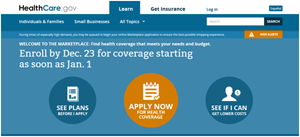 With Spring, comes….Spring cleaning, of course! This is a great time to start getting your marketing, PR and communications organized for the upcoming school year or for the quieter days of summer. But, you’re probably asking yourself, “What should I focus on first?” Here are three ideas:
With Spring, comes….Spring cleaning, of course! This is a great time to start getting your marketing, PR and communications organized for the upcoming school year or for the quieter days of summer. But, you’re probably asking yourself, “What should I focus on first?” Here are three ideas:
- Content. Develop a gameplan over the next few months to update content on your organization’s web pages. Delete now-expired deadlines and dates, update calendars, map out blog entry topics (including planning guest bloggers), view currently posted or linked videos (and remove any outdated videos), check links to make sure they still work, and rework messaging, where needed.
- Planning. If you don’t already have a Three Year Marketing & Communications Strategy, this is the time to start the process of outlining your strategy and the steps involved, so that you can plan ahead for holding focus group meetings, sending out surveys, and implementing the first year of your strategy. A thorough strategy includes taking inventory of how well your print and electronic methods of communications are working for your organization. If you’ve been feeling like you’re “just keeping your head above water” then run, don’t walk, to developing your strategy. Need help? Sounding Board Marketing & Communications can help you develop your strategy. Are you a DIYer? If you opted-in emails from Sounding Board, you received a FREE “Marketing & Communication Strategic Planning 101” Guide—use this guide to develop your own Three Year Strategic Plan! If you haven’t yet opted-in to receive emails, then fill out the contact form to the right!
- Learning. Take the time to focus on your professional growth in marketing, PR and communications. Even us marketing experts and consultants are lifelong learners—I know there’s always, always better ways of doing things. Read articles on Mashable.com and PR Daily (and, if you’re on social media, you can follow their pages for daily updates…and, if you follow Sounding Board on social media, I post PR/marketing/communication best practices articles on my pages, as well. In addition, I also write blog posts on a variety of best practices (click on the topics linked above, and if you want to see them when I post them, follow Sounding Board on social media—click on the social media icons above!).
I genuinely want to help you accelerate your organization’s marketing, PR and communication efforts. If there’s anything I can do to help YOU in your efforts to obtain, maintain, retain, and strengthen your organization’s stakeholder relationships, please send me an email at hvmcgowan@sounding-board.net or call me at 916.673.8868.

 If you do an internet search on “marketing” or “messaging” you usually end up with a bunch of results that don’t really apply to your organization’s needs.
If you do an internet search on “marketing” or “messaging” you usually end up with a bunch of results that don’t really apply to your organization’s needs. 



